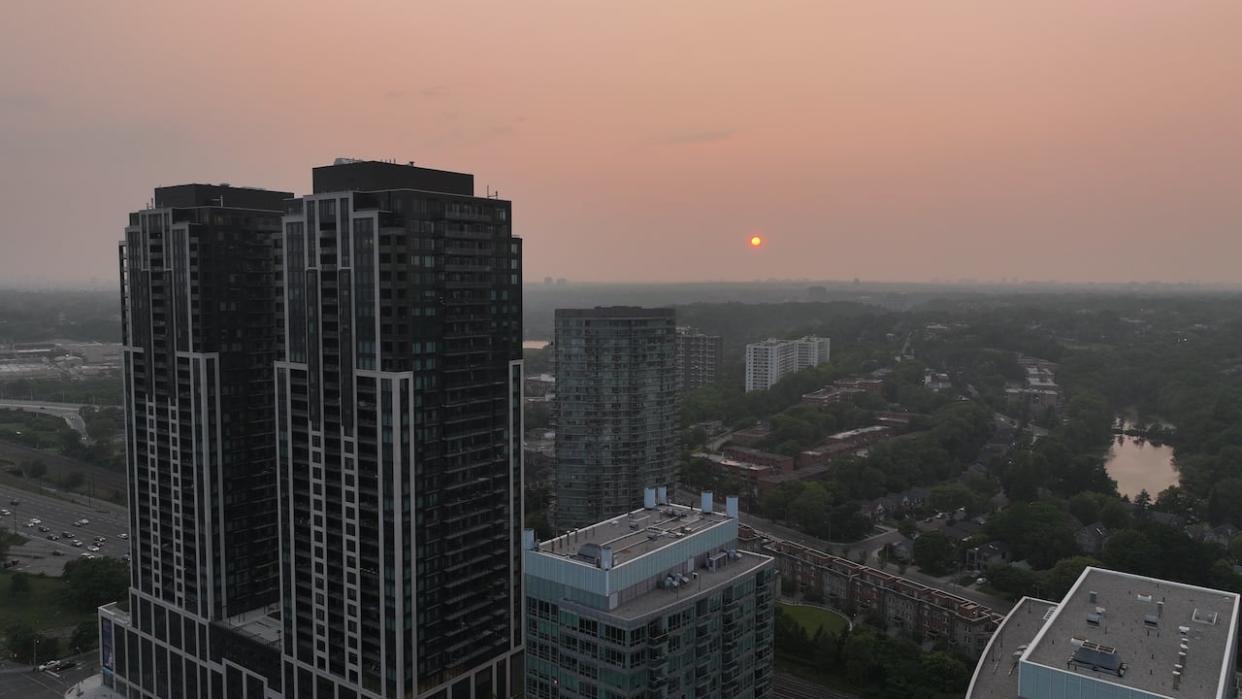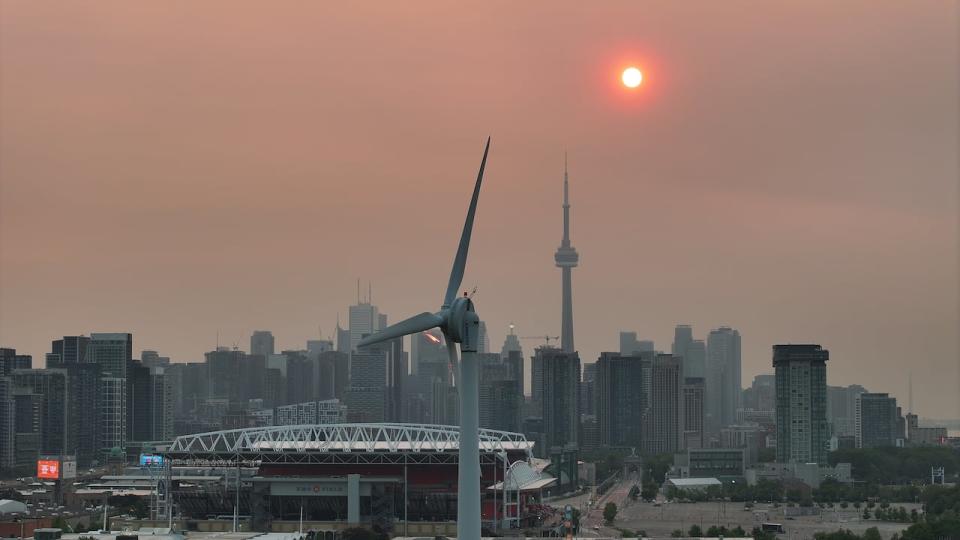Vulnerable groups need more support with poor Toronto air quality, say climate experts

Smoky air continued to descend on Toronto over the weekend and into Monday, cloaking the city in further pollution just two weeks after it was cast in a thick fog for multiple days due to out of control wildfires.
And those who are most vulnerable to the poor conditions, particularly marginalized communities, need to be better protected, environmental health experts told CBC Toronto.
Environment Canada said Sunday that smoke plumes from forest fires in Quebec and northeastern Ontario had once again caused hazardous pollution to hang in the air, prompting the agency to issue a special air quality statement.
Though the air quality alert ended for Toronto early Monday, the agency warned smoky conditions could continue through the week. As of late Monday afternoon, Toronto's air quality was ranked a four out of the 10-point Air Quality Health Index (AQHI) scale, which measures air quality based on how it will impact health.
That indicates a moderate risk to health, which means activities can continue as normal but the public should monitor for any symptoms like coughing or throat irritation.
But some groups are more vulnerable than others, and require further protections and policy improvements in order to shield them from bouts of poor air quality that could become more frequent in cities like Toronto, said Rebecca Saari, an assistant professor in the department of civil and environmental engineering at the University of Waterloo.
"Air quality has the worst impact on low-income groups," she said. "Folks who are socio-economically disadvantaged often have higher exposures to certain kinds of air pollution … and lower capacity to protect themselves from those risks, because they have lower access to clean, indoor environments."
Air quality worse in low-income neighbourhoods
A study authored by researchers at the University of British Columbia in 2020 on air quality in major Canadian cities found that marginalized groups experience higher cumulative air pollution in urban settings.
In Toronto, the research found that low-income and immigrant residents in the city were more exposed. More racialized residents live in the inner suburbs, and there the air contains more sulfur dioxide.
Amanda Giang, an assistant professor and environmental scientist at UBC that co-authored the study, told CBC Toronto that unhoused residents and those who have to work outside do not have the ability to protect themselves from pollution.
"Not all households have access to air cleaners. Research has also shown that in many places, there are higher rates of asthma in low-income, racialized minority communities, and people with such pre-existing conditions face greater risks from smoke exposure," she said.

Smog and soot lingers over Toronto at sunrise due to smoke from forest fires on June 9, 2023. (Patrick Morrell/CBC)
Giang pointed to another study published last year that found that traffic-related air pollution in Toronto was at higher levels in neighbourhoods where immigrant residents live. Truck emissions were the main culprit and have worsened over time, despite a decrease in traffic-related air pollution, it found.
In Toronto, there is evidence that those who are most exposed to poor air pollution are those who have more residential instability, like renters and people who are new to Canada, said Saari.
"They might be living in lower quality housing," she said. More outside air can penetrate in poorly built buildings that don't keep pollution out, she explained.
Proper housing with filtration, with a central HVAC system, is a simple way for cities to improve conditions for these vulnerable groups, she said.
Research published in January 2022 from the University of Toronto found there are more pollutants in the air in Toronto social housing and exposure reduction strategies are needed. Groups that live in social housing are often low-income seniors or children, or have disabilities, which put them further at risk, the researchers state.
The City of Toronto said in a statement to CBC Toronto that it looks to Toronto Public Health for guidance on how to support vulnerable communities with poor air quality.
While it did not discuss supports for those in social housing, it said for people experiencing homelessness, it has 9,000 shelter spaces available and a network of drop-in programs. Cooling centres are also available for extreme weather events.
Consistent poor air causes long-term health issues
Dr. Chung-Wai Chow, a respirologist and lung transplant specialist at the University Health Network in Toronto said long-term exposure to poor air quality can lead to more than lung disease. It's associated with heart disease and diabetes as well, she said.
The very young and the very old, especially within low-income groups, are particularly at risk for these long-term health impacts, she explained. Protecting these populations can involve changes at the municipal level, she said.
"There are some local things that we can do, one is improving our local environment, having a lot more green space and planting trees around playgrounds and seniors' homes," she said. "They can help a lot in terms of filtering out a lot of the air pollution."
She said she hopes there is a greater understanding that air pollution is a global public health issue, and one that is very real for Toronto residents.
"[Air pollution] really leads to a huge burden of disease," she said. "And we individually can do things to make things better. If we think of greening our spaces, being thoughtful about how we travel, it does make a big difference."


